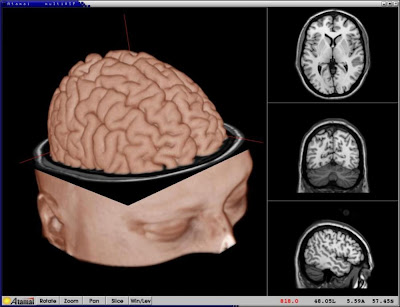asthma
- Dr. Neil Solomon, M.D., Ph.D., |
| Asthma is a chronic lung condition where the airways are constricted due to inflammation resulting in breathing difficulty. During an asthma attack, the lining of the airways (bronchial tubes) swell, become inflammed, the muscles (known as bronchospasm) of the bronchi tighten & extra mucus (or phlegm) is produced which further narrows the airways. | |
| When airflow has to struggle its way through the bronchial tubes, it causes a wheezing or whistling sound. Asthmatic symptoms include : tight feeling in the chest, breathing difficulty, shortness of breath, wheezing, sweating, dizziness & in severe cases, areas around the lips turn blue, pulse rate races & sweating takes place. Asthma can be very mild to life threatening. Mild asthma (slight breathlessness & cough) can usually be helped using breathing techniques & medications on the spot while for severe asthma attacks, emergency medical attention has to be called for immediately if symptoms persist longer than 10 minutes. | |
| Even though asthma is commonly linked to allergens yet not all asthmatics have allergies & neither do people with allergies have asthma. Allergens entering an asthmatic's sensitive airways are known to cause an attack. |
People who are asthmatic & allergic to allergens have an antibody called immunoglobulin E (IgE) in their body. This antibody is only found in people with allergies since it is produced by the body in response to allergens. IgE activates special cells called mast cells (also known as immune cells) to release chemicals called mediators, such as histamine which will cause redness & swelling. With a high intake of Vitamin E, the IgE levels will decrease, thus reducing risk of an asthma attack. |
Asthmatics are more likely to experience heartburn (acid reflux)
whereby stomach acid back up into the esophagus (food pipe) which in some cases may cause asthmatic symptoms. To help prevent this problem, stop eating or drinking several hours before going to bed. It may be helpful to elevate the head of the bed.
Though asthma usually begins in childhood, it can still start later at any age. Some children do outgrow asthma as they grow up due to a change in the anatomy of their lungs & bronchial tubes.
A child whose parents has an allergy or is asthmatic stands a 60-70% of inheriting asthma. An adult who has never gotten asthma may get it after pneumonia or severe bronchitis. It is believed that children who are less exposed to infections & dirt have a weaker immune system which makes them prone to develop allergies.
A natural tropical fruit found to contain over 150 nutraceuticals which include 20 amino acids, 9 of which are essential because they are not produced in the body, vitamin A, all the B vitamins, vitamin C, vitamin E, beta carotene, ursolic acid, linoleic acid, proxeronine (bromelain), scopoletin, pectin, phytosterols, calcium, magnesium & zinc. Noni's important healing properties help reduce the severity of asthmatic symptoms by boosting the immune system while strengthening the celluar structure of the broncial tubes.
Noni also contains scopoletin, which belongs to a group of compounds called coumarins. Scopoletin has strong anti-inflammatory influence that has proven useful in the treatment of asthma & bronchial diseases.
Noni has high levels of bromelain which is also known as proxeronine. This substance has potent anti-inflammatory properties. Surely, it must be the whole noni makeup, the combination of all the nutrients found in this fruit that makes it unique & more importantly effective against many health challenges.
Ms. Isabelle Navarre-Brown recommends in 76 Ways to Use Noni Fruit Juice (Direct Source, 2001) to take 6 ounces of noni juice for the first 3 days & thereafter 3 ounces daily. When symptoms improve, stop taking noni for a few days before resuming to 3 ounce per day. In addition the use of a noni poultice allows noni's healing compounds to move deeply into the affected organ.
Reference: “How much, How Often, For What” –Neil Solomon (Direct Source, 2002) “Phytochemical and biological study of radal lomatia hirsuta” ErazoS, et al. Journal Ethnopharmacol (Jul 1997) 57(2):81-83


Komentar
Posting Komentar